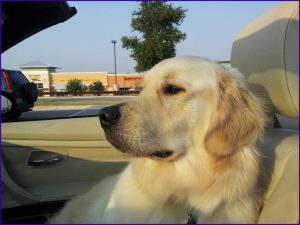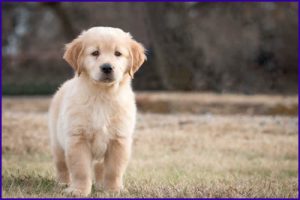General Information
Are you looking for quality Golden Retriever puppies for sale from a reputable professional breeder? Here at White Magic Golden Retrievers, we have full English Creme puppies, 3/4 English Creme/1/4 American Golden Retriever puppies, and half English Creme/Half American Golden Retriever puppies. We offer a two-year health guarantee. Our goal is to provide you with a healthy, loving companion.
Welcome to White Magic Golden Retrievers, a web page of Bremer Kennels. We started breeding Golden Retrievers in 2010. It has been an exciting journey to have Goldens in our kennel. Goldens are such loving and sweet dogs. They love their “humans”. They love the companionship that a person can offer. They are excellent with children, loving and protective as well.
What We Offer
-
- 2-year health guarantee. Limited Registration (no breeding rights).
- Boarding fee of $100 a week if we have to keep the puppy after 9 weeks of age.
To Hold a Puppy
You can put down a deposit ($400) to hold a puppy through:
-
- Zelle: using this number (817-975-7702)
- Venmo @mayra-bremer
- CC over the phone (817-975-7702)
Puppy Transportation
Delivery is available by air to any state, or ground delivery in Texas and surrounding states depending on the distance.
General Information about the Golden Retriever Breed
The Golden Retriever is a relatively modern and very popular breed of dog. It was developed as a retrieving dog to use while hunting wild fowl. Today it is one of the most common family dogs as it is easy to handle, very tolerant, and does not require very much of the owners, other than regular exercise. It is often affectionately known as Golden or Goldi.
Appearance
A Golden Retriever reaches its full height at about one year of age, and its full weight at about two. While it matures physically at about  two years age, mentally it does not fully mature until three or older, and many owners comment that their dogs retain their puppyish nature for life. They are natural clowns.
two years age, mentally it does not fully mature until three or older, and many owners comment that their dogs retain their puppyish nature for life. They are natural clowns.
This is a medium-large breed which in appearance is strikingly similar to the yellow Labrador Retriever, especially when young and especially those Goldens with lighter coats. The most obvious difference is the Golden Retriever’s luxuriant coat. To confuse the two breeds is a serious faux pas to a fancier of either, of course.
Coat
The AKC standard states that the coat is a “rich, lustrous golden of various shades”, disallowing coats that are extremely light or extremely dark. This leaves the outer ranges of coat color up to a judge’s discretion when competing in dog shows.
Temperament
Goldies are active and fun-loving but also exceptionally patient, as befits a dog bred to sit quietly for hours in a hunting blind. Other characteristics related to their hunting heritage are a size suited for scrambling in and out of boats and an inordinate love for cool water.
 Like the Labrador, they are noted for their intelligence, their affection for people, and their tolerance of children. The other side of this is that they require lots of companionship to be happy. They do well in obedience trials and make excellent guide dogs. While they might not do quite as well in field trials as Labrador Retrievers, they are excellent hunters who are famous for their outstanding scenting abilities. They are exceptionally eager to please their owners.
Like the Labrador, they are noted for their intelligence, their affection for people, and their tolerance of children. The other side of this is that they require lots of companionship to be happy. They do well in obedience trials and make excellent guide dogs. While they might not do quite as well in field trials as Labrador Retrievers, they are excellent hunters who are famous for their outstanding scenting abilities. They are exceptionally eager to please their owners.
The Golden Retriever loves to retrieve. Retrieving a thrown stick, tennis ball, or frisbee can keep a Golden occupied and entertained for hours, particularly if there is also water involved.
History
The breed was originally developed in Scotland, at “Guichan”, near Glen Afric, the highland estate of Sir Dudley Majoribanks (pronounced “Marchbanks”), later Lord Tweedmouth. For many years, there was controversy over which breeds were originally crossed; especially popular was a romantic story concerning the purchase of a whole troupe of Russian sheepdogs from a visiting circus. In 1952, the publication of Majoribanks’ breeding records from 1835 to 1890 removed all doubt.
Color
Color ranges from nearly blonde to this dark golden coat.
 The original cross was of a yellow-colored dog, Nous, with a Tweed Water Spaniel bitch, Belle. The Tweed Water Spaniel is now extinct but was then common in the border country. Majoribanks had purchased Nous on 1865 from an unregistered litter of otherwise black wavy-coated Retriever pups. In 1868, this cross produced a litter that included four bitch pups. These four became the basis of a breeding program that included Red Setter, sandy-colored Bloodhound, St Johns Water Dog of Newfoundland, Springer Spaniel, and two more wavy-coated black Retrievers. The bloodline was also inbred and selected for trueness to Majoribanks’ idea of the ultimate hunting dog. This vision included a more vigorous and powerful dog than previous retrievers but that would still be exceptionally good with people and thus gentle and trainable. Russian sheepdogs are not mentioned in these records, nor are any other working dog breeds. The ancestry of the Golden Retriever is all sporting dogs, in line with Majoribanks’ goals.
The original cross was of a yellow-colored dog, Nous, with a Tweed Water Spaniel bitch, Belle. The Tweed Water Spaniel is now extinct but was then common in the border country. Majoribanks had purchased Nous on 1865 from an unregistered litter of otherwise black wavy-coated Retriever pups. In 1868, this cross produced a litter that included four bitch pups. These four became the basis of a breeding program that included Red Setter, sandy-colored Bloodhound, St Johns Water Dog of Newfoundland, Springer Spaniel, and two more wavy-coated black Retrievers. The bloodline was also inbred and selected for trueness to Majoribanks’ idea of the ultimate hunting dog. This vision included a more vigorous and powerful dog than previous retrievers but that would still be exceptionally good with people and thus gentle and trainable. Russian sheepdogs are not mentioned in these records, nor are any other working dog breeds. The ancestry of the Golden Retriever is all sporting dogs, in line with Majoribanks’ goals.
Golden Retrievers were first accepted for registration by the Kennel Club of England in 1903, as ‘Flat Coats – Golden’. They were first exhibited in 1908, and in 1911 were recognized as a breed described as ‘Retriever (Golden and Yellow)’. In 1913, the Golden Retriever Club was founded. The breed name was officially changed to Golden Retriever in 1920.
The Hon. Archie Majoribanks took a Golden Retriever to Canada in 1881, and registered Lady with the American Kennel Club (AKC) in  1894. These are the first records of the breed in these two countries. The breed was first registered in Canada in 1927, and the Golden Retriever Club of Ontario, now the Golden Retriever Club of Canada, was formed in 1958.
1894. These are the first records of the breed in these two countries. The breed was first registered in Canada in 1927, and the Golden Retriever Club of Ontario, now the Golden Retriever Club of Canada, was formed in 1958.
The AKC recognized the breed in 1932, and in 1938 the Golden Retriever Club of America was formed.
